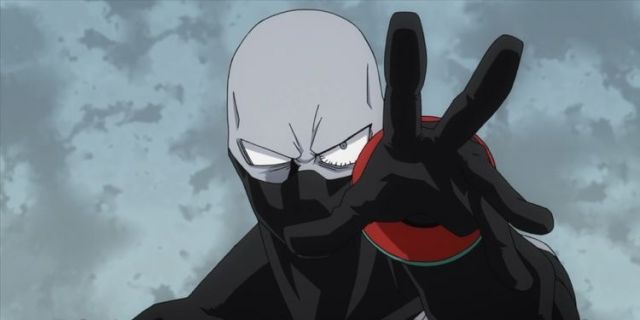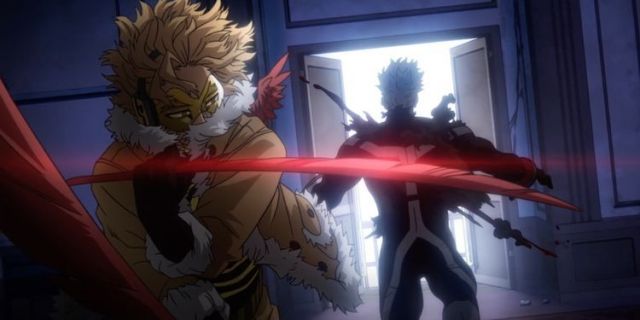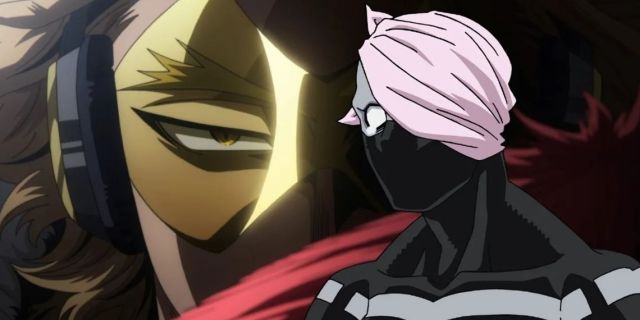It sounds like you’re discussing the thematic complexities and character developments in “My Hero Academia,” specifically focusing on the ideologies of heroes and villains during the Paranormal Liberation War Arc. This arc delves into the blurred lines between heroism and villainy, and how characters like Hawks and Twice challenge traditional notions of these roles.
Hawks’ portrayal as a double agent blurs the lines between hero and villain, showcasing the moral complexities that arise when characters prioritize the greater good over personal loyalties. This narrative choice encourages viewers to question conventional heroic archetypes and the ethical dilemmas that heroes face in the pursuit of their goals.
Twice’s sacrifice adds another layer to this exploration of ideologies. His act of self-sacrifice, aimed at protecting his comrades in the League of Villains, highlights the notion that even characters traditionally labeled as villains can possess heroic qualities and motivations. This event challenges viewers’ perceptions of heroes and villains as strictly black and white, emphasizing the gray area where characters’ actions and intentions intersect.
The overall thematic exploration you mentioned speaks to the depth of character development and storytelling in “My Hero Academia.” The series often delves into the complexities of its characters’ motivations, blurring the lines between heroism and villainy and prompting audiences to consider the broader ideological perspectives at play.
If you have any specific questions or would like to discuss more aspects of “My Hero Academia” or any other topic, feel free to ask!
Hawks’ Betrayal in My Hero Academia

My Hero Academia’s Hawks has a stellar reputation that is marred by his actions during the Paranormal Liberation War Arc, which provides a fascinating exploration into how complicated it is to embody the role of a double agent. Hawks is initially introduced as a trustworthy, albeit sassy, symbol of valor. Yet, as the anime progresses and he is asked to take on the role of a double agent, Hawks willingly and calculatingly betrays his comrades, a move that is at odds with the traditional role of the superhero. This betrayal is further exemplified in Hawks’ relationship with Twice, whom he builds a close friendship with, only to leverage it for the purpose of his secret mission.
As a double agent, Hawks had to infiltrate the League of Villains and relay their plans back to the Hero Public Safety Commission. After spending some time undercover, Hawks discovers a greater threat and digs his heels deeper with the League in order to be privy to further details about their plans with the Liberation Army. This leads Hawks to fully befriend Twice, and even go as far as to help him better understand the themes and messages in Destro’s manifesto. Twice, desperately believing in the friendship, divulges information about the overarching plan and alliance between the Liberation Army and the League of Villains. While on the surface, Hawks’ actions can be seen as a betrayal, the intent behind them points to the heroic goal of doing whatever it takes, including ultimately killing Twice, to protect society from evil. This moral ambiguity personifies the gray area My Hero Academia seeks to unpack, calling into question whether a hero’s actions, however unacceptable, are justified if they serve the greater good.
Twice’s Sacrifice

My Hero Academia‘s fan-favorite Twice has a backstory that is an interesting contrast to Hawks’ narrative. His arc during the Paranormal Liberation War brings an unexpected facet of his character to the forefront. Twice has an innate sense of selflessness which is quite often attributed to heroes. His willingness to risk everything, even his life, to protect those he holds dear flips the conventional villain stereotype on its head and reinforces My Hero Academia‘s blurring of the lines between heroism and villainy.
When Hawks finally reveals that his true allegiance was always to the heroes, Twice feels betrayed and is taken over by shame and guilt, feeling that he has put his friends in danger once again. This inner turmoil causes him to snap and fight Hawks to his very last breath in order to save the League and especially Himiko Toga. This causes Hawks to struggle with fighting Twice as he realizes that deep down that although Twice is technically a villain, he is not a bad person. Although, Hawks tries to get Twice to see that as well, the trauma is too heavy for Twice and ultimately, the fight leads to Twice’s death. This entire stand-off is later used by Dabi, one of the members of the League of Villains, as he accuses Hawks of murdering Twice. Dabi’s argument holds weight due to the fact that Twice had his back to Hawks when it happened, which further solidifies the gray area.
My Hero Academia’s Blurring of the Lines

My Hero Academia consistently pushes the boundaries of character development, breaking the idea of heroes and villains out of their boxes in order to explore the ambiguity that lies in between. This effort to blur the lines between these archetypes sets the show apart, giving it a deeper sense of realism and humanity. Characters who were once easily labeled as heroes and villains gradually unfurl into complex figures, their actions dictated by a spectrum of motives that challenge these traditional classifications.
The inception of the gray area can be traced back to the character of Stain, the infamous Hero Killer. Stain’s philosophy that many of the professional heroes are false and unworthy of their status, combined with his determination to kill only those he deems undeserving sparks an intense debate on the legitimacy of heroes within society. Even though his methods were violent and deadly, Stain’s ideology resonates with man, leading some to see him as more of a vigilante than a villain. This kind of moral complexity, later echoed in Hawks’ actions and Twice’s sacrifice, adds a very gripping dimension to My Hero Academia. By continually blurring these boundaries, the series establishes itself as an essential watch for not only anime fans but also fans of the superhero genre who seek a more nuanced examination of heroism and villainy without it being as cynical as Amazon Prime’s Invincible or The Boys.
My Hero Academia ingeniously reconstructs the framework of heroism and villainy, compelling its viewers to grapple with the uncomfortable truth that heroes and villains aren’t always clear-cut categories. By casting a spotlight on characters like Hawks and Twice, it exposes the audience to a narrative that swings back and forth between the expected and the surprising, enriching the storyline with depth and power. This exploration of gray areas uncovers a wealth of opportunities to critically analyze what it truly means to be a hero or a villain, painting a captivating portrait of the struggle between personal motivation, societal expectation, and the consequences of the decisions that shape the world.
The philosophies of My Hero Academia, exemplified by Hawks’ betrayal and Twice’s sacrifice, reveal the profound layers of storytelling that resonate beyond the epic fights. This thought-provoking approach makes My Hero Academia not just a stellar anime but a significant contribution to the broader conversation on what differentiates a hero from a villain – and whether at its core there is any real difference at all.















Leave a Reply